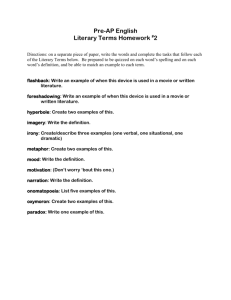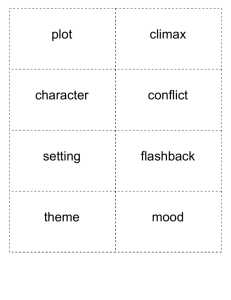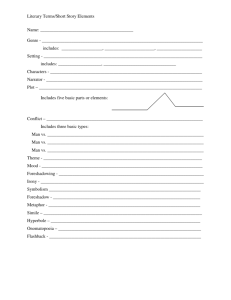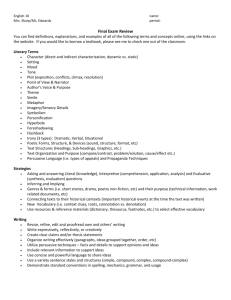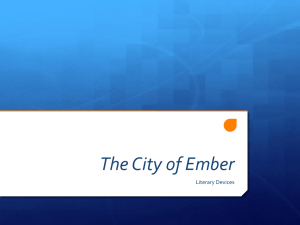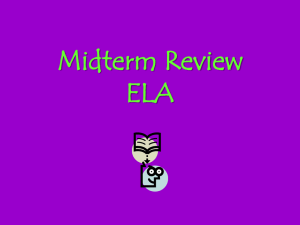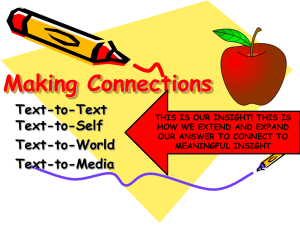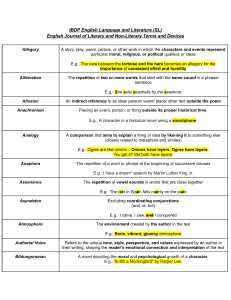Literary terms
advertisement
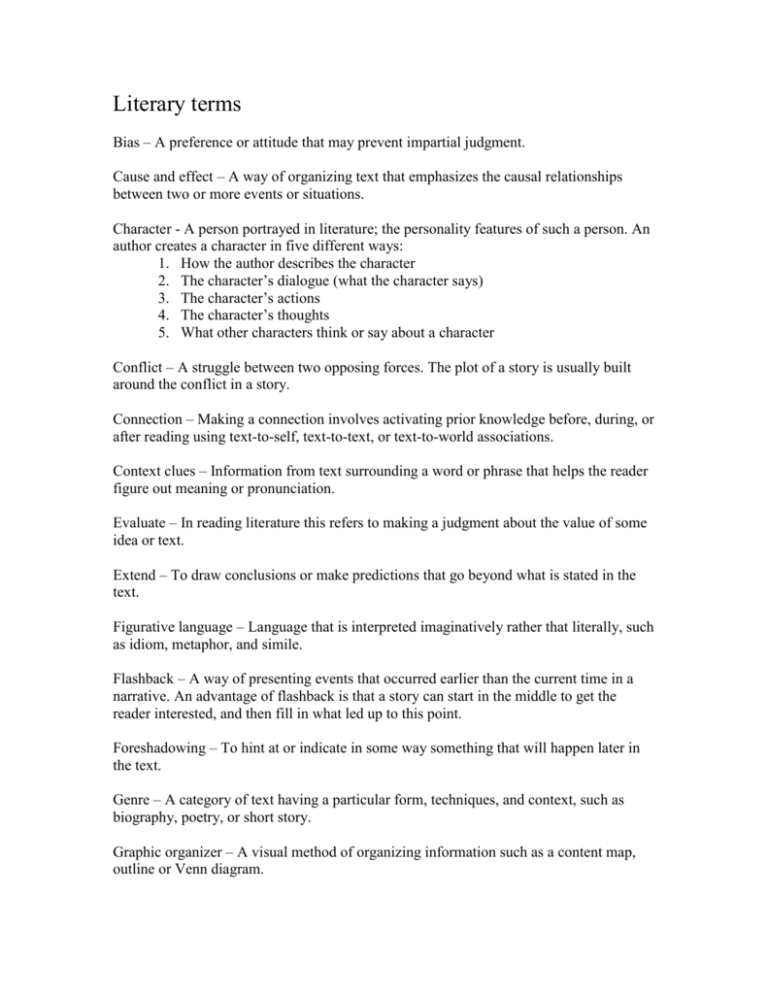
Literary terms Bias – A preference or attitude that may prevent impartial judgment. Cause and effect – A way of organizing text that emphasizes the causal relationships between two or more events or situations. Character - A person portrayed in literature; the personality features of such a person. An author creates a character in five different ways: 1. How the author describes the character 2. The character’s dialogue (what the character says) 3. The character’s actions 4. The character’s thoughts 5. What other characters think or say about a character Conflict – A struggle between two opposing forces. The plot of a story is usually built around the conflict in a story. Connection – Making a connection involves activating prior knowledge before, during, or after reading using text-to-self, text-to-text, or text-to-world associations. Context clues – Information from text surrounding a word or phrase that helps the reader figure out meaning or pronunciation. Evaluate – In reading literature this refers to making a judgment about the value of some idea or text. Extend – To draw conclusions or make predictions that go beyond what is stated in the text. Figurative language – Language that is interpreted imaginatively rather that literally, such as idiom, metaphor, and simile. Flashback – A way of presenting events that occurred earlier than the current time in a narrative. An advantage of flashback is that a story can start in the middle to get the reader interested, and then fill in what led up to this point. Foreshadowing – To hint at or indicate in some way something that will happen later in the text. Genre – A category of text having a particular form, techniques, and context, such as biography, poetry, or short story. Graphic organizer – A visual method of organizing information such as a content map, outline or Venn diagram. Hyperbole – Figurative language in which exaggeration is used for heightened or comic effect, for example, ‘I’ve seen that a million times.’ Idiom – A phrase that means something different from the literal meaning of the words in the phrase, such as ‘raining cats and dogs.’ Imagery – Concrete words or details that appeal to the senses. The use of words by the author to paint a picture in the reader’s mind. Infer – To draw a conclusion based on evidence about something that is not explicitly stated. Irony – A contrast between what is expected or hoped for and what actually happens. Literal meaning – The exact, primary meaning of a word or text. Literary device – A technique used in literature such as alliteration, flashback, foreshadowing, hyperbole, idiom, imagery, metaphor, onomatopoeia, rhyme, simile, or personification. Main idea – The central or most important idea in a text. Mood – The author’s emotional attitude toward the subject or theme of the text for example, hopeful or bitter. Personification – A figure of speech in which human characteristics are attributed to animals, plants, objects, ideas, and so on. Plot – The arrangement of events or main story in a literary text. Point of view – The perspective or beliefs of the author. The perspective from which the story is told. Propaganda – Literature intended to influence public opinion, often by appealing to people’s fears and prejudices. Purpose – The author’s intent, such as to describe, entertain, inform, persuade, teach a lesson, etc. Rhetorical question – A question to which no answer is expected, such as ‘Didn’t I tell you to clean your room?’ Root word – The meaningful base form of a word without the affixes. For example, the root word of ‘friendship’ is ‘friend.’ Sequence of events – The time order of events. Setting – The time and place in which the events of a story occur. Solution – The way in which the conflict or problem of a story is resolved. Style – A writer’s way of saying things, including word choice, sentence structure, organization of ideas, etc. Summarize – To express just the major ideas and most important supporting details from a text. Supporting detail – The specific facts and ideas that support or illustrate the major ideas in a text. Symbolism- An object that has meaning in itself but is also used to symbolize something else. Text structure – The way in which a text is organized, such as cause/effect, chronological, spatial, and comparison/contrast. Text-to-self – Refers to connections readers make between the text and their experience or background knowledge. Text-to-text – Refers to connections that readers make between one text and another text. Text-to-world – Refers to connections that readers make between the text and larger issues and ideas. Theme – The central idea or message of a literary text. Tone – The reflection of the author’s attitude toward the subject, characters, or reader such as friendly, teasing, etc. Comparable to tone of voice in speech.
